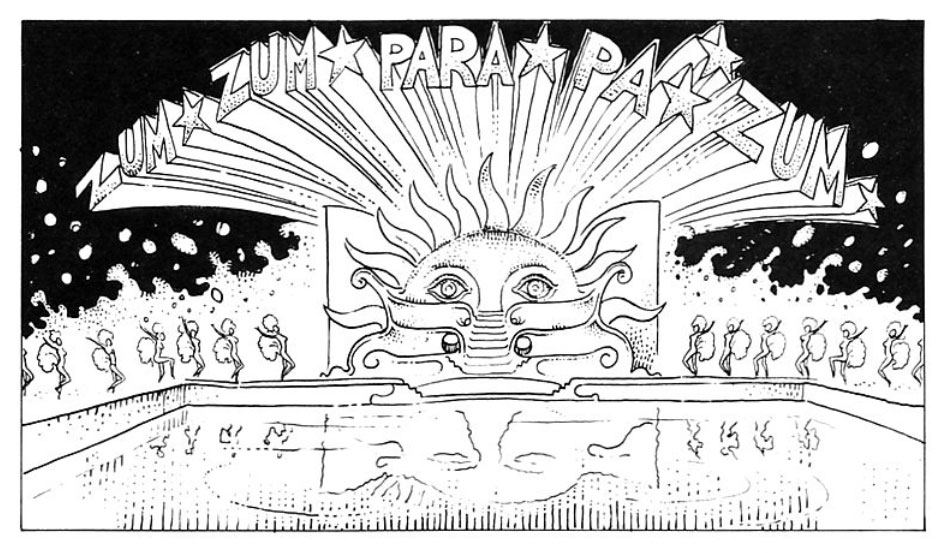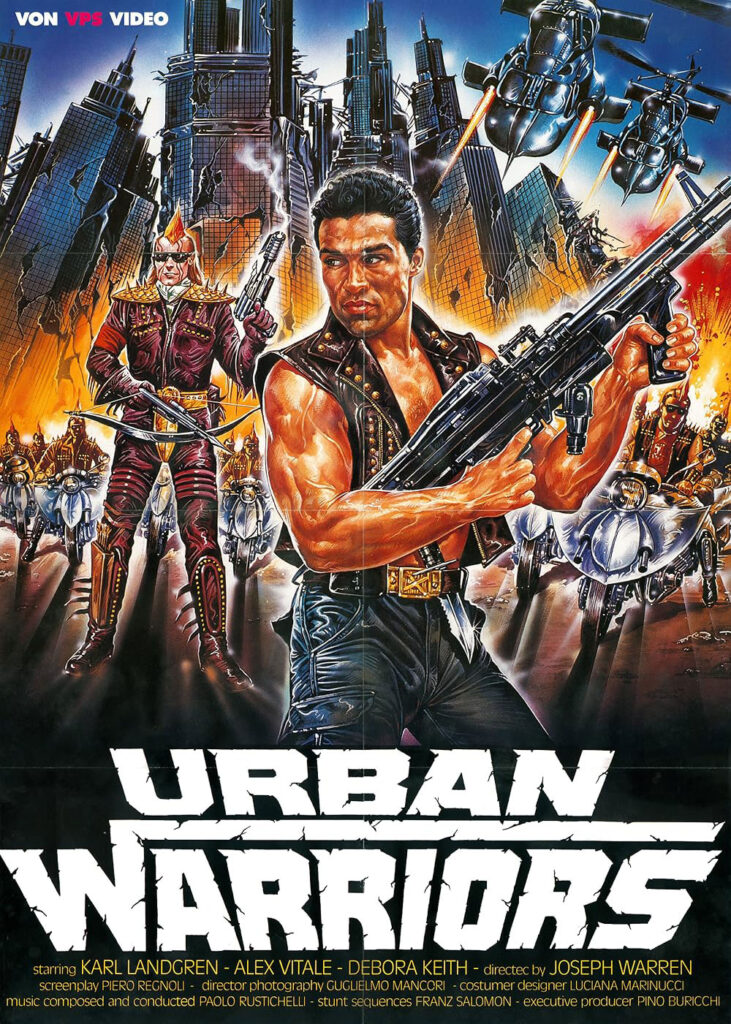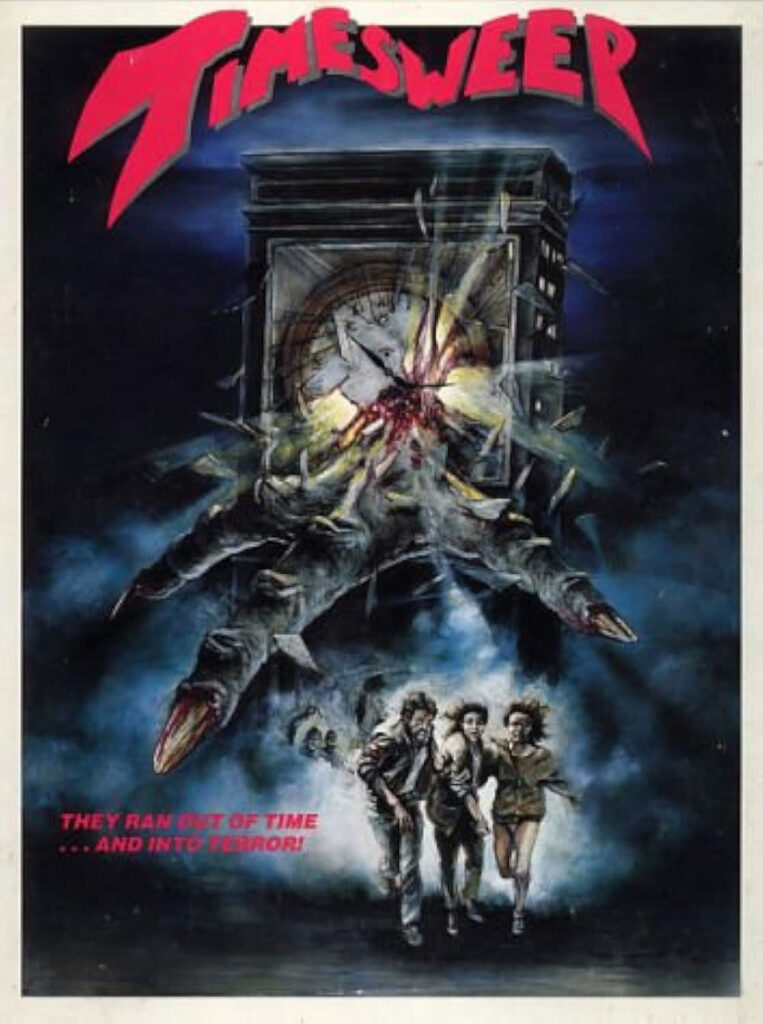To give one an idea of the kind of film this is, and the kind of audience it attracts (this reviewer included), the ‘Alternate versions’ section of Invasion of the Bee Girls’ IMDb page contains this gem: “The recent MGM DVD is missing footage. Part of the scene where Beverly Powers…seduces her man is missing, deleting some of her nudity…The MGM version looks the best this low-budget film has ever looked, but the missing footage rankles.” That’s someone who feels robbed. Modern viewers are denied that particular set of breasts, yes, but there are plenty more in this exploitation classic. Continue reading “Invasion of the Bee Girls”
ZUM ZUM PARA PA ZUM

Chardon
These are from Chardon, Ohio.
Killing American Style
Filmmaker Amir Shervan’s Samurai Cop wowed shitty movie audiences when it was rediscovered in the 2000s, so it made sense that the mutants would dig into his back catalogue to see what else he left behind. Shervan has thirty directing credits to his name, most from before he left his native Iran due to the Islamic revolution. He was in the wilderness, filmmaking-wise, for a bit, but came back in 1987 with Hollywood Cop, kicking off a string of five unforgettable b-flicks that culminated with Samurai Cop, before he left the business once again. One of those glorious remnants was Killing American Style, a home invasion action flick released in 1988. Continue reading “Killing American Style”
Eve of Destruction (1991)
According to the internet, so it must be true, actress Renée Soutendijk was a star in Europe and the Netherlands in the 1980s. Lithe, athletic, and, most importantly, young and blonde, Soutendijk racked up credit after credit, even playing Eva Braun once. When that mountain is climbed, it’s not uncommon for a star to set their sights on Hollywood. However, whatever dreams of Hollywood stardom or Oscar-winning praise were dancing in her head were shattered by the stark reality of the shitty movie. After this flick, she returned to Europe and never looked back.
Directed by Duncan Gibbins, who had directed many popular music videos, and written by Gibbins and Yale Udoff, Eve of Destruction follows Soutendijk in a dual role. She plays scientist Dr. Eve Simmons, head of a secret government project to develop humanoid robots indistinguishable from the real thing for use in espionage and on the battlefield. Her latest creation is Eve VIII, also played by Soutendijk, a model based on Dr. Simmons herself. It looks like her, talks like her, and has all of Simmons’ memories. Continue reading “Eve of Destruction (1991)”
Rail Bridge
Here are a couple pics of a derelict rail bridge in Cuyahoga Falls.
Urban Warriors, or, The Worst Day at Work Ever
 If you, dear reader, are convinced that you’re watching something familiar during Urban Warriors, then congratulations. You are a connoisseur of 1980s Italian Mad Max ripoffs. Only someone with knowledge of this strange subgenre of film would recognize that Urban Warriors, the last film from director Giuseppe Vari, shares much footage with The Final Executioner, released three years earlier in 1984. This flick isn’t the only movie to recycle substantial amounts of footage from The Final Executioner. A couple of years later The Bronx Executioner did the same thing, only in a way that destroyed just about all narrative consistency. Urban Warriors has a plot that one can follow.
If you, dear reader, are convinced that you’re watching something familiar during Urban Warriors, then congratulations. You are a connoisseur of 1980s Italian Mad Max ripoffs. Only someone with knowledge of this strange subgenre of film would recognize that Urban Warriors, the last film from director Giuseppe Vari, shares much footage with The Final Executioner, released three years earlier in 1984. This flick isn’t the only movie to recycle substantial amounts of footage from The Final Executioner. A couple of years later The Bronx Executioner did the same thing, only in a way that destroyed just about all narrative consistency. Urban Warriors has a plot that one can follow.
Brad, Maury, and Stan (Bruno Bilotta, Bjorn Hammer, and Maurice Poli) are doing computer technician stuff in an underground bunker. Right in the middle of the workday, World War 3 breaks out, spreading nuclear apocalypse over the entire world. The power in the bunker is knocked out, so the trio has to make their way to the surface. It takes them days to find a way out, and when they do reach the surface, Vari shows us the ravages of atomic warfare — a rocky yet pristine hillside, and a small office complex whose glass sides gleam in the sunlight. It’s about as low effort as one will ever see in a post-apocalyptic movie. Continue reading “Urban Warriors, or, The Worst Day at Work Ever”
Deadly Friend
Warner Bros. did Wes Craven dirty. Deadly Friend, from 1986, was Craven’s first feature since A Nightmare on Elm Street, which made a bucketful of money for New Line Cinema. Warners didn’t have the confidence in Craven that his previous success had earned. After a first cut of this film was poorly received by a test audience, producers and studio execs ordered reshoots. Nothing new there, but as originally shot, Deadly Friend was not a horror movie. It was a sci-fi thriller. Craven was forced to change the story, add in blood and gore scenes, and turn his film into something against his and screenwriter Bruce Joel Rubin’s intent. Continue reading “Deadly Friend”
Grizzly
Jaws was released on June 20th, 1975. Less than a year later, on May 12, 1976, Grizzly, a wild ripoff, hit theaters. According to the internet, so it must be true, producers/screenwriters Harvey Flaxman and David Sheldon made no secret about the film’s origins. They were very much looking to cash in on the success of Jaws. By October of 1975 director William Girdler was filming, and by the end of the next year, Grizzly became the highest grossing independent film up to that time.
I was surprised to learn Grizzly is an independent flick, because it has the look and feel of mid-budget studio schlock, or even a TV movie from the era. I couldn’t help feeling this was exactly the kind of movie Jaws would have been had it not been in Spielberg’s hands. Even the main cast is perfect for studied mediocrity. Continue reading “Grizzly”
Timesweep
 Someone out there, somewhere, owns the rights to Timesweep, the 1987 magnum opus from writer/director Dan Diefenderfer (screenplay credits were shared with Larry Nordsieck and John Thonen). As of this writing, Timesweep is nowhere to be found on streaming services, outside of the nooks and crannies where someone has uploaded an old VHS transfer. For shame. This movie is right up Tubi’s alley, and I’m sure whoever owns the rights could use the extra fifty bucks. Anyway…
Someone out there, somewhere, owns the rights to Timesweep, the 1987 magnum opus from writer/director Dan Diefenderfer (screenplay credits were shared with Larry Nordsieck and John Thonen). As of this writing, Timesweep is nowhere to be found on streaming services, outside of the nooks and crannies where someone has uploaded an old VHS transfer. For shame. This movie is right up Tubi’s alley, and I’m sure whoever owns the rights could use the extra fifty bucks. Anyway…
Timesweep tells the tale of a bunch of mild-mannered 30-something Midwesterners who find themselves trapped in an abandoned building that is hopping through time. Monsters, aliens, zombies, a crazed hermit, killer bugs, and more abound, providing the audience with a surprising amount of gore for so moribund a budget.
The building in question is an old film studio that is slated for demolition. An architecture professor, Vincent Hill (Kevin Brief), a film professor, H.G. Lewis (Frank Vrooman), and students have gathered to explore the old edifice before it’s gone forever. Joining them is a local news anchor covering the story, Angela Markell (Denise Gray), and cameraman Mike Romero (Michael Cornelison). Mike is the rebel of the movie. One can tell because he shows up two minutes late, and he’s rocking a beige jacket. Yeah, there were some wild folks in Kansas City, Missouri in the 1980s. Continue reading “Timesweep”









